This is a review for what is now the fourth Vulcan bar that I’ll review here at Garage Gyms; the Vulcan Standard 28.5 mm Olympic Bar; or what I think of as the Box Bar. Previously I reviewed the Vulcan Elite, the One Basic, and the Bearing Training Bar, and I think that it’s safe to say that the Elite and this Standard are my two favorites so far. Granted, these two are the more expensive of the four so it’s not a complete surprise that it would work out that way, but it is what it is.
Let me first say that as far as the brand goes, Vulcan is a great company. They are one of the few equipment suppliers that have yet to disappoint me in some way. The owner knows his stuff (especially when it comes to bars) the prices are competitive and reasonable, and all of the equipment I’ve handled has all performed as promised; if not way better. It seems like they take a lot of pride in what they do, and I like that.
Last update January 2018 – standard fact, link, and price checking.
So Why Another Vulcan Bushing Bar?
Like I just said I’ve already reviewed three other Vulcan bars, and all are priced under $400. So why would I review another mid-range Vulcan rather than a high-end Vulcan bar like the Pro Olympic Bar or the Absolute? I mean the 28.5 Standard is only a mediocre upgrade to the One Basic, and it’s not a high performance bar like the Elite, so why bother?
Well I became interested in the Standard after the owner of Vulcan Strength made a couple of interesting comments about it to me. To make a long story short, he claimed that this bar is manufactured to such high standards that it is simply the best mid-range barbell on the market for heavy-duty, commercial use. Better not only than the One and the Elite, but the competition’s mid-range bars as well; including the Ohio line.
To put that another way, he claimed that the Standard could withstand the day-to-day, long-term abuse of multiple athletes thrashing this bar without it breaking, developing a bend, or experiencing sleeve seizing or departure. All this durability along with a better than average performance for a bar in this price range is what makes it “the best choice for commercial gyms, boxes, and academic athletic departments”, or so the story goes.
My first thought was that if this bar can offer both performance and reliability in that kind of hostile environment, then it should have no problem whatsoever surviving in a home gym or garage gym that sees use for but an hour or two a day, four or five days a week. Since this claim is backed with a lifetime warranty against everything but simple negligence for a price under $300, I figured that it was worth checking out.
I want to be fair though. It would be negligent of me to not point out that pretty much every bar dealer and manufacturer out there wants you to believe that their bar is the best bar in the world; that you can’t possibly go wrong by giving them your hard-earned money. Try to find a product listing for a barbell that doesn’t in one way or another elude to the “fact” that their bar is the best.
In reality, not many bars actually will last a lifetime. Far too many bars can’t go even a year or two without developing a wobble or having a sleeve seize; even some of the common box bars out there are nothing more than superbly-marketed garbage. My experience with Vulcan thus far has been great so I don’t automatically assume this claim is false. All that said, the wool is not easily pulled over my eyes – I have to see it to believe it.
Vulcan Standard Specifications
The specifications are taken from the Vulcan 28.5 mm Standard product page found here.
- IWF-spec 20 kg Olympic bar
- 28.5 mm shaft diameter
- 194,000 PSI tensile strength
- Moderately aggressive knurl; no center knurl
- Dual-markings (IWF & IPF)
- Bright zinc finish
- Oil-impregnated bronze bushing system
- Grooved sleeves for friction/V-lock plates
- Made in USA with a lifetime warranty
- $286 with shipping included
Extended Testing
I spent more time working with this particular bar than I typically do with bars that I review. I generally lift with a bar for about a month before I start writing the review, but I’ve been with this Standard for over three months now. I took my time with this one because I wanted a chance to use it for everything and put some serious mileage on it. I’m not a global gym or CrossFit box, so the only way I can get an idea of how it will hold up in a large box setting is to abuse it for longer than usual and actually try to ruin it.
On the off chance that you’re wondering why I usually take a month to review each bar, it’s because I find it to be a reasonable amount of time to see how well a bar performs and how it holds up, but not so long that I only get to publish a review once every six months. I’d love to get reviews out much faster than I do, and I’d also like to spend more time with each and every bar… it’s basically just the compromise between those two things I’ve come up with. Since I can easily update reviews with any new discoveries I make, it seems to work well.
In any case, I’m obviously satisfied with the amount of time I’ve spent with the Standard at this point, and as you’ll see as you read on, I am quite happy with it. It’s a great bar, and the price is right.
The Superficial
There is nothing cheap looking about this bar; the Standard is very professional looking. In terms of the overall finish of the shaft and the sleeves, it looks much more refined than the other Vulcan bars that I’ve reviewed (though that’s really due to many of them being black zinc bars.) The bright zinc finish is clean and consistently applied, and I’ve yet to have any issues with chipping, scratches, or oxidation.
One of the things I don’t like about many <$300 bars is that the sleeve shoulder is just way too thick; like 3″ thick! Not only is it an unattractive feature, but those thick shoulders equate to less weight on the bar (assuming the bar is to spec.) Fortunately the Standard has very slim shoulders, which means more loadable sleeve length. Considering that the Standard is a multi-purpose bar and not exclusively an Olympic WL bar, getting a lot of wheels on the sleeves may actually come up in your training.
The Knurl
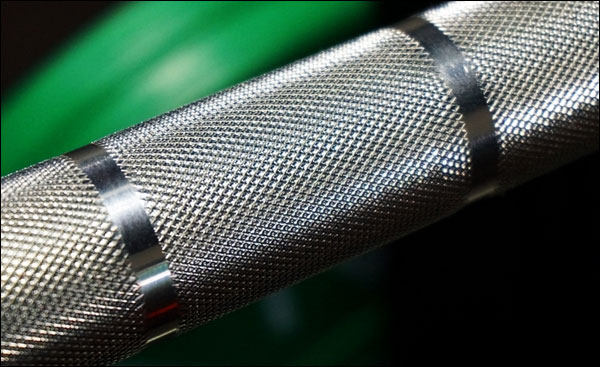
The Vulcan 28.5 mm Standard is a dual-marked bar. I myself have the previous version that only has Olympic markings (which is why I am showing you this picture from the Vulcan site above), but other than that my bar and the just recently released dual bar are identical.
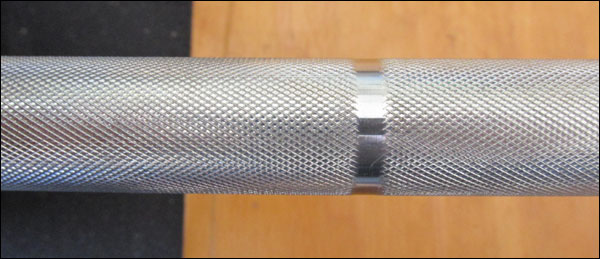
My Standard is the recently retired version with only IWF markings. It’s the same bar other than that though.
Initially Vulcan Strength was planning to offer both dual-marked Standards and IWF-marked Standards, but demand for dual-marked bars was so much higher that it didn’t make sense to offer both. I believe that it’s safe to say at this point that having both IPF and IWF marks on bushing bars is just the way of the future. If you simply must have a Standard with only Olympic markings, you’ll have to grab the Standard Bearing Bar version.
The knurl depth itself is probably just perfect for most people. It’s a very nice compromise between too aggressive and too soft. It offers a very firm grip but without feeling excessive during high-rep sets. It’s really the ideal knurl depth for a multi-purpose bar that will actually be used as such. You can easily move from snatches to bench press to power cleans and so on.
Worth mentioning is that the Standard is knurled all the way to the sleeves, which is always a blessing for us tall folks. That’s one of those things a lot of the other bar companies fail to do on their economy and mid-range bars; annoys me to no end that they couldn’t take that knurl another whole inch to the sleeves. What’s that cost?!
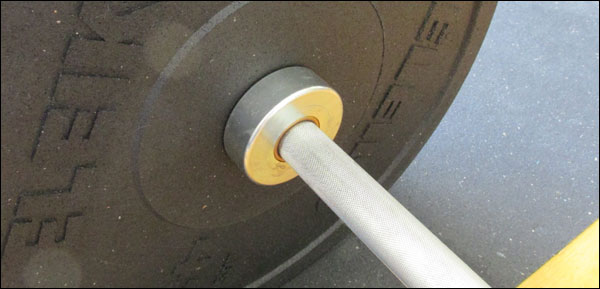
The bar is knurled all the way to the sleeves to accommodate a maximum-width snatch grip. You can also see how slim the shoulders are in this shot.
There is no center knurl on the Vulcan Standard.
Elasticity / Whip / Tensile Strength
The Vulcan 28.5 mm Standard is a 194k PSI tensile strength bar. This is an above average rating for a sub-$300 Olympic barbell, and it’s a rating that’s high enough to safely eliminate any concern that the bar will develop a permanent bend.
Worth noting is that the tensile strength ratings and yield strength ratings given for Vulcan bars are lab results taken after the shaft is worked, not the pre-worked number given by the steel mill. What this means is that 194,000 is an accurate number; not a guesstimate (or a total fabrication, as I believe happens quite often.) It’s also a minimum rating and not just an average. Technically any given bar could be higher, but I doubt that deviation is enough to warrant even discussing it.
The Standard displays whip on par with other mainstream 28.5 mm bars in the 190k-200k PSI range. It’s not as whippy at low weights as many of the more expensive and elite true 28 mm Olympic bars, but it has noticeable elasticity to it at moderate and heavy weights. In my experience, Vulcan bars usually do pretty well in the whole whip department, even with the economy bars. For the money, I doubt that you’ll have any complaints whatsoever.
Vulcan Standard Review: Rotation / Assembly
The Vulcan Standard utilizes self-lubricating bronze bushings. Bronze bushings (specifically these oil-impregnated sintered bushings) are the ideal choice for a bar due to the fact that they are virtually maintenance free. Other materials like brass and steel (even cast bronze) are more likely to lose their ability to spin freely over time (to be fair tho, spin can usually be completely regained after breaking down the bar to clean and lubricate the components, but who really wants to do that even once, much less on a regular basis.)
The fact is that bushings are one of the least expensive components in a barbell, so you’ll rarely see manufacturer’s cutting corners when it comes to them. If you’re running into a lot bars with steel or brass bushings, you’re probably looking for your training equipment in the wrong places.
Just like the elasticy, the Standard’s sleeve rotation is on par with other bushing bars in its price range. Turnover is smooth without being excessive, and there is no unusual noise, no grinding, nor any other sings of unwanted friction.
I’ve yet to experience seizing or catching in any Vulcan bar, and if it was going to happen, it probably wouldn’t be the Standard that does it. The sleeve assembly of the Standard is just done so well and the tolerances are too precise to warrant any concern. There is no lateral play in the sleeve, and there is no horrific clanging and banging when the bar is dropped. I expect zero issues with rotation over the life of this bar.
Be that as it may, this bar is warranted just as well as any premium Olympic bar. It has a lifetime warranty against not only developing a bend, but also against sleeves seizing. It’s not the only USA-made bar under $300 to have such a warranty, but their are more that have no such warranty than those that do, so it’s still a perk.
The Box Bar?
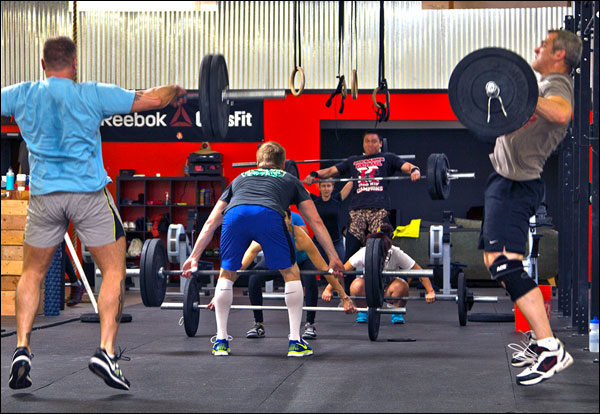
So is this the best mid-range barbell for a gym or box?
I’m not completely sure that I can answer that question as well as a box owner. For me, in my garage gym, the Standard has been great; very reliable. Unfortunately, I don’t honestly believe that the time I’ve spent with the bar with only a couple of us regularly using it even comes close putting the bar through the sort of abuse that it will receive in a box/affiliate or commercial gym setting; even with the extra time I spent with it.
I’ve tossed this bar around, I’ve intentionally dropped it unevenly, left it loaded in the rack overnight, and even stuck it in my landmine for some heavy bent-over rows (which is just awful for a bar in so many ways), and I haven’t managed to damage the 28.5 Standard yet. However, we all know that things will be much worse for it in the typical box or commercial gym setting because this stuff will be happening all day, every day, and by people who may not even know that the way they are handling the bar is negligent.
That said, I do think that the Standard is one of the best mid-range choices for a home gym or garage gym. I’d even go so far as to say that I have no reason to suspect that it’s not the best choice for a commercial gym. It’s definitely a better option than many of the bars that gym owners currently choose for their facilities. Matter of fact, I own many of the common box bars and I can say truthfully that the majority of them could be welded into the gun rack and no one would ever miss them.
In any case I don’t have any real problems with this bar. It could stand to be chrome but I get it that going with chrome would defeat the purpose of trying to offer a multi-purpose bar that can last a lifetime at a low price. The zinc is so well done it’s really a non-issue, and at least it’s not black!
Given the fact that the Standard does have a lifetime warranty and fact that I didn’t run into any issues with this bar, I’m going to thumbs up the claim despite my inability to test it to the degree that an entire group could. Still, I’d love to get some feedback from any gym owners (or even individuals) that have purchased this bar.
Vulcan 28.5 mm Standard Olympic Bar Review – Summary
So there you have it, my Vulcan Standard review. As always, do your research before you give someone your money. My opinion is just one of many, and even a mid-range bar is an expensive investment, so ask your gym buddies, and read those product reviews.
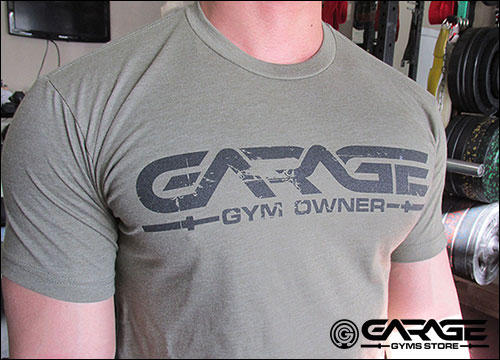

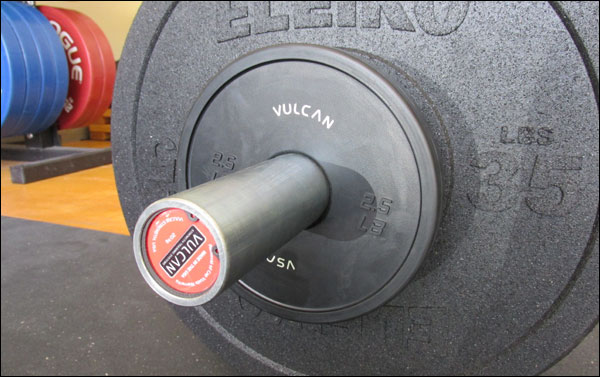
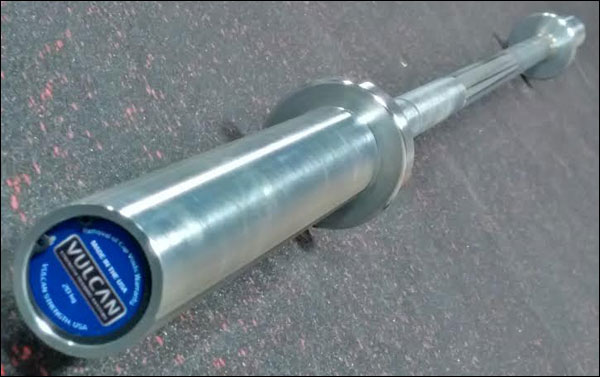
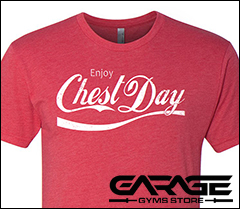
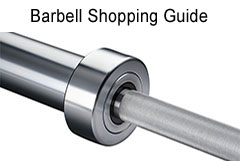
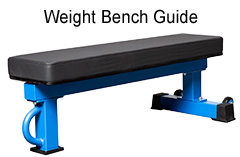
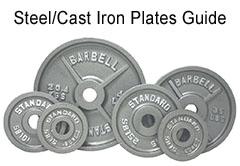
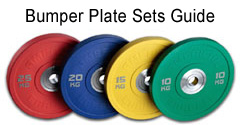
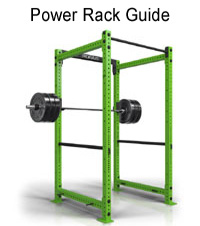
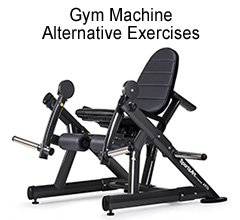

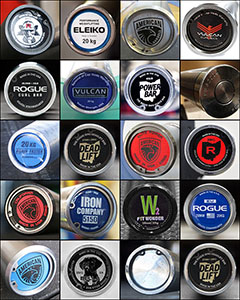

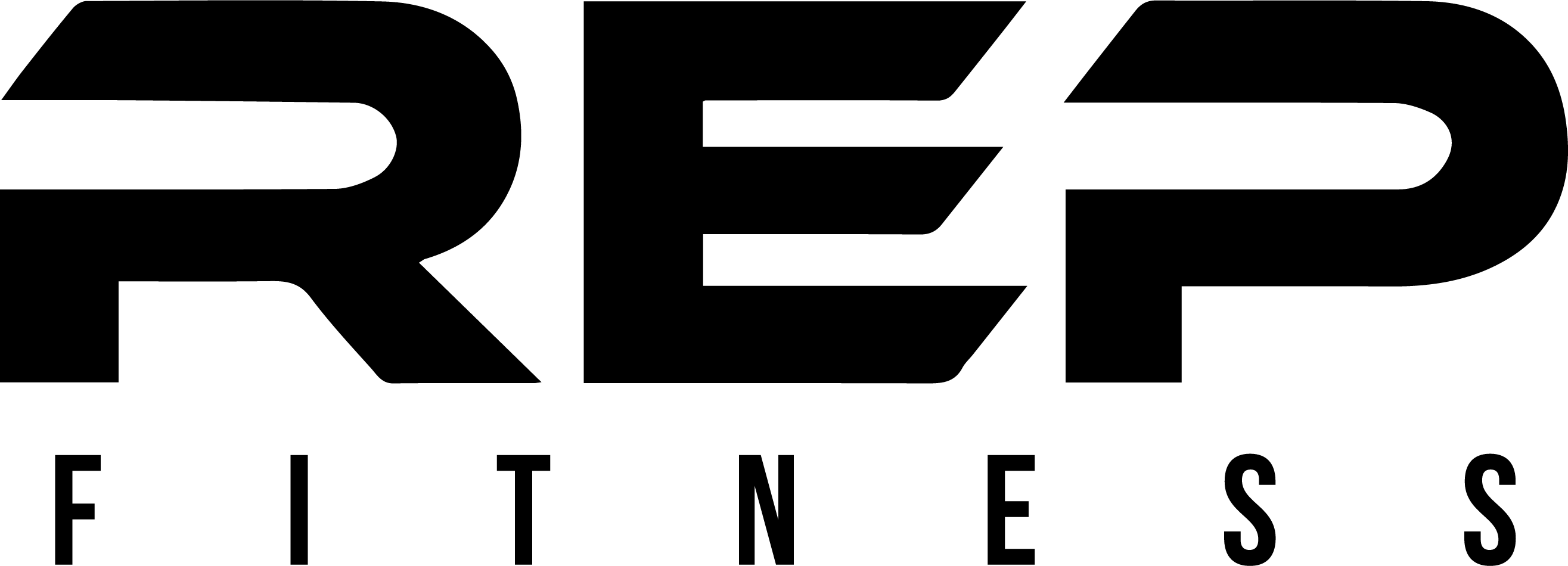
Agree with your direction. I’ll be glad to order one and give you feedback as well. In my case, since I don’t “make” bars and promote many brands, all the brands, as you said, promote as the best. My deal is to create options, based on personal preferences and individual box needs. Most CrossFit boxes don’t want to pay out a lot of money in general so in the end, supplying options for a given price range is what I do. That being said, if I sell cheaper bars, I try to also make customers aware of why and be sure they are aware of all the options, brand by brand. That ‘s part of the reason for them coming to me as opposed to just talking to one or two manufacturers. Your reviews are valuable and help me decide what models to order as test samples as well. When you represent many bars and brands, you have to pick the best options in each price range. In the long run, you get what you pay for but for me I try to get them a good deal in the process. Some manufacturers are better than others at offering out reseller programs, some don’t offer any. I try to honestly represent as many options as possible with those who really care about marketing their product to a broad niche’ not just CrossFit. Keep the reviews coming ! They are always worth the read ! As a sidenote, I do also like bars for CrossFit with a medium type knurling rather than lite, like I have seen. Those who do CrossFit regularly get a little benefit of a little tougher hands in the process so they don’t rip them up on the bar doing pull ups. I’ll be testing out a couple of inexpensive import bars shortly and will pass on anything I learn. A number of Chinese companies have offered to make bars and plates for my company as well, and am looking at quality, value and potential as well.
I would reach out to Diamond Pro. They make the bars for Fringe and Wright Rubber as of right now, and they are a US based company. Their bars retail from $189-229, are 160k PSI tensile strength (Bearing bar is $320, 28.5mm and 190k psi). Another option is Lynx Barbell, but I believe that they import their bars.
Thanks for the direction. I believe Diamond Pro has potential for me to some degree, Lynx mostly not. Not in need of additional import bars via secondary means. awesome reviews BTW, I read them often and find them very worthwhile. As a side note, haven’t had much “business” connection with Vulcan as yet but appreciate their products. You’re right however, like many others, they always seem to be out of plates, etc. I’ve contacted them in the past and have not found them “reseller friendly” so as you might expect, I have found plenty to offer clients. I also know most of the manufacturers everyone uses in China and some of the games. Most of what I do is to sort it out for clients and create value. Again, my compliments on your direction.
I’m a little surprised that no one is really responding to this review. I purchased this bar about a month ago and I love it. The service from Vulcan was just unbelievable. I ordered on a Wednesday and the bar was on my doorstep Saturday morning. The packaging was a little beat up but the bar was in great condition. Granted it’s my 1st real barbell since I always used whatever crap that was thrown in with the package deal from Dick’s so I may not be too hard to impress. This is a major step up from what I’m used to and the more I use it the more see the difference in overall workout quality when you are using quality equipment. This was $285 well spent and I plan on upgrading my shoddy bench and squat stand in the very near future. I’m thinking the Rogue SML-2 as soon as I get some extra coin. What do you think of that squat stand? I’m currently using the Rogue Echo ES-1(which is a great economy squat stand) but I really need to upgrade to something with a built in pull up bar. Also I noticed that Vulcan doesn’t offer any benches on their site. Seems strange to deal in quality workout equipment and they don’t offer a bench. Why do you think that is? Please let me know what you think of the SML-2. Thanks in advance for the feedback.
There’s absolutely nothing wrong with the SML-2. It’s going to feel to be night and day to the Echo. Price is good for 3×3, though you have to buy your spotters separate. I like the Monster Lite line; very little price difference for 3×3 vs 2×3, so no real drawback. Only other thing I’d consider in that category is the HR-2 probably.
The Standard is a nice bar, you’re right about that. Maybe timing is off for this one because of that $299 SS bar. /shrug. Also, I don’t know why they don’t have a bench, that is kind of weird.
Thanks for the reply. I’m about to pull the trigger on either the SML-2 or the V-Hammer Squat Stand II from Vulcan. Ceiling height is not an issue for me and the Vulcan is on sale for under $700 shipped with spotter arms included in the package. I really value your knowledge so which stand would you chose and why?
Being tall myself, I like the height of the V-Hammer, but that height is not exclusive to Vulcan as there is always the SML-3. The price is great on the Vulcan with the massive 8-gauge steel and free shipping/spotters, but it’s not a big enough price difference for me to ignore the Westside spacing or the long list of accessory options you get with the Rogue. Both stands have their merits, but for me if I planned to bench, I’d go Rogue. If I just wanted a beefy squat stand for squats and chins and wasn’t worried about accessories and 1″ hole spacing, I’d grab at the Vulcan. The good news is that either way it’s a good choice.
Hey John,
I wanted to follow up with you on the purchase of my squat stand. After much debate over the SML-2 and the V-Hammer II, I went with the SML-2. That decision was based primarily on your input and the boatload of accessories that are available from Rogue. I got the flat bench, Black Chan Bar( I know that is not your favorite), and the Matador all bundled along with the squat stand. All solid choices that I am pleased with up to this point. The only thing that I was hung up on was that the V-Hammer comes with the spotter arms included. Oh well, hopefully I can get some sort of deal with those on Black Friday.
Now on to my next question. With the recent purchase of the Chan Bar, I now have 2 solid bars as I also have the Vulcan Standard. I do plenty of static lifts and I am just starting to incorporate a few Olympic lifts into my routines. Are these two bars sufficient for my needs? I am obviously asking because of these great new high quality bars that AB is introducing to the market. I feel like I may have missed the boat with the 2 bars that I have now that these SS options are available at such great prices. Thanks again for your thoughts and suggestions.
Very glad to hear you’re happy with everything, including the Vulcan GHD. I like Vulcan. It’s too bad more people don’t give them a shot; always going with Rogue just because.
You having a Standard and a Chan means you are set for some time. You don’t need another bar for the snatch and clean&jerk. Matter of fact, the SS WOD is technically just more of the same for you. Another 28.5 mm bushing bar. It’s a good price, but if you don’t actually need it, it’s too expensive by like $299, if you know what I mean.
Vulcan has some of these on sale for $200.00 because of scratches and other aesthetic flaws. If I were in the market for a bar, I would jump on this opportunity. Free shipping too, I believe.
Sorry it is the BAsic on sale….still a good deal
.
I am stuck in-between getting the Vulcan Standard and the Rogue Ohio. I would be using it for everything from deadlifts to Olympic lifts. I can get a better deal on the Vulcan because I am also planning on getting the Alpha bumper plates but everything I read says that the rogue has such high quality. Also a lifetime warranty from a bigger company may last longer then from a smaller one. How would you compare the two against each other?
In this case, both companies will back their bars. Vulcan is smaller than Rogue, but they’re not fly-by-night or anything, and they’re one of the few non-Rogue’s that aren’t in financial trouble, so I wouldn’t worry about that. As far as the bars go though, I do like the Standard over the Ohio, and mostly because Vulcan uses Oilite self-lubricating bronze bushings rather than cast bronze. Oilites require less maintenance, get better over time rather than worse, and make about half the noise of cast bronze when dropped. This is especially true with the Standard as it is put together very well – very tight tolerances. Rogue makes a great product, no doubt, but I personally prefer the Vulcan in this case.
Thanks for such a fast reply and for your opinion. I think it was the push I needed to make up my mind and go with the Vulcan. I’ll let you know.
Thank you for all of the work that you do. Your website has been tremendously helpful in helping me design my garage gym. I am wondering if you can talk about the noise difference between the Vulcan Standard Bar and the American Barbell California Bar? Noise is an issue for me but the California Bar is our of stock and won’t be back in stock for another 3-4 weeks. Is there a significant noise difference between the Standard and California? Thank you.
Hi Casey, thank you. Yeah so the California owes its quietness to both a tight sleeve assembly, and to a lesser extent the composite bushings. You’ve basically got industrial plastic in between two metal components rather than a third piece of metal (bronze.) Now I say lesser extent because the Rogue Bar 2.0 has composite, but it’s not very quiet. So I think it has more to do with the tight manufacturing tolerances than the material used.
The manufacturing tolerances of the Standard are just as high as the California, and Vulcan uses the next best thing to composite, and that’s oil-impregnated bronze (I say next best thing simply in terms of the noise – performance-wise oil-impregnated bronze is a little better). It’s much quieter and smoother than cast bronze like what you’d find in Rogue’s non-composite bars and a lot of other random bars out there.
Standard is a great bar, and so is the Cali. I just don’t think the noise difference is going to be so different that you need to wait a month+ to get a bar on the way. If every bit matters to you, there is also the Black and Chrome from AB. Essentially the same bar for $25 less – though they’d have you believe otherwise! Only thing I like to tell people about AB bars is that their knurl is pretty soft compared to what would be “average” or “moderate”.
What is the exact length of these Vulcan bars?
All Olympic WL and powerlifting bars built to spec are 2200 mm long – about 86″, or 7.2′. Vulcan bars are built to spec.
I recently purchased this bar and compared to the CAP barbell I was using it is like night and day. The sleeves are tight with no slop or grinding noises from the bearings. My digital calipers show it is machined to exact specifications and weight of bar is right on the money at 20kg. My CAP barbell weighed 39.6 lbs vs 44lbs. I can’t be more impressed with the quality of knurling too. This bar should last me decades in my basement gym. I have the Rogue RM-390C rack on order and this will take my home gym to the next level. Selling my Fitness Reality 800 XLT power rack. It has served me well but ready to take it to the next level.
That’s awesome. 39.6 pounds though? That’s insane.
Can you imagine training with that CAP bar and say a bunch of CAP plates that are off by just as much and thinking you can bench 405, then going to a meet and having them put 405 up only to be squished by it haha?
My wife and I bought a garage gym for Christmas ‘18 on the Black Friday sales after Thanksgiving. After researching for at least 3 years, I knew the money was going into bars& plated. I also knew those plates were going to be Vulcan Alphas. It made sense to buy Vulcan bars to go with the Vulcan plates. Everything we read put them at least on par with Rogue-I’ve been using Rogue plates since high school and they are the standard for CF Boxes around the country. Anything of lesser quality would not work for me. Let me tell you right now that money spent on this bar is 100% worth it. The KEY to a garage gym is wanting to use your own stuff. I WANT to use my Alphas. I WANT to use my bar. If it wouldn’t be seen as pretentious, I’d take my bar to the box with me (where they use Rogue) just because I like it so much. The knurling is perfect, the spin is sublime. Snatches and cleans seem to float up. The only problem with this bar is that the first time you’ll use it is after you’ve bought it. Not much opportunity to test drive.
Vulcan bars can be hard to come by since Rogue is so common in boxes, and neither brands are common in commercial gyms. Still, I’ve been a Vulcan fan for years.. I was testing and reviewing their equipment before most people even knew who they were, but to this day it’s a rare thing to hear a complaint about them. The few I have heard were normal issues you can have anywhere, with any vendor… shipping issue / shipping damage, etc. Never quality or performance issues. It’s a solid company, and the Alphas are definitely a popular bumper option for so many reasons. They just need to offer them in kilos!
Hey, great content as always and was curious if you have any experience with Bells of Steel and/or Wright barbells as they compare to the Vulcan Standard and One. Price and specs seem comparable, but with a lifetime warranty.
Wright’s isn’t a bad spot to pick up a bar that’s comparable to the Vulcan One. I suppose Bells of Steel would also be on par with something like the Vulcan One too, though I’d personally rather own a Vulcan than a Bells of Steel bar. That said, the Vulcan Standard is a superior bar to the Vulcan One… I have owned and reviewed both. Matter of fact, Vulcan and American Barbell are the two companies I’ve probably had the largest number of bars from; as in, I have owned nearly their entire inventories, including everything from the lower cost bars to their premium lines. If you’re looking to spend closer to $200 on a bar than $300+, it really probably wouldn’t make much difference which of these three companies you went with though. Just focus on the knurl and the finish (go with your preference.)
As far as the lifetime warranty thing goes, don’t think too much about it unless the warranty is alarmingly short… like a year or less. The reason for this is because any manufacturing defect in the bar will be obvious upon arrival. Maybe you don’t notice for a few months if you’re new to the sport, but you’ll notice pretty soon, and the manufacturer will fix it. There is no issue you can have 5 or 10+ years down the road that would be considered under warranty. Nobody is going to replace your decade old bar no matter what’s wrong with it. If it took 10 years to bend, then you bent it. If it took 10 years for the sleeves you seize, you just didn’t maintain it, and so on.
Also, lets be honest… will you still be using the Vulcan One or a Bells of Steel bar after 2 or 3 or even 5 years of lifting progress? I seriously doubt it. You’ll be sticking it in your landmine, where it will get torn up and bent while you lift on a much nicer bar.
Great feedback and food for thought around those three. Due to the small footprint and ceiling height of my basement gym, I currently use a FringeSport Shorty bar for powerlifting and a GetRXd shorty for landmine work and other beater exercises that I don’t want to scratch my Fringe bar. This is my first time looking into a fullsize bar for overhead garage/outdoor lifts to compliment with a set of Vulcan plates that your other review gave me confidence to invest in.
Sounds like all three of those bars could be okay for novice Olympic lifting work, though potential resale could be better with Vulcan if and when I decide to upgrade.
Thanks again for your insight. I really appreciate the comparative review.
Of course. When you settle on something and have some time with it, let me know how you like it.